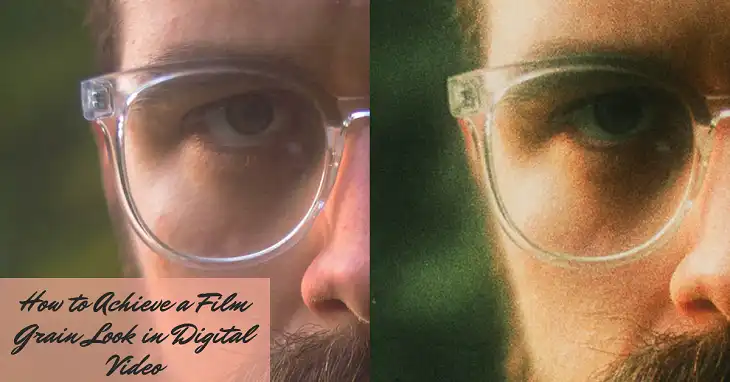Film grain, once a hallmark of analog cinematography, has found new life in the digital era. This unique visual texture, characterized by tiny particles scattered across the image, adds depth, character, and a touch of nostalgia to digital footage. Filmmakers and content creators often seek to recreate this look to evoke a sense of warmth, authenticity, and timelessness in their work.
The appeal of film grain extends beyond mere aesthetics. It carries with it a rich history, harking back to the golden age of cinema when celluloid ruled supreme. This historical connection can trigger emotional responses in viewers, transporting them to bygone eras or evoking memories of classic films.

What Is Film Grain
To effectively recreate film grain in digital video, it’s crucial to understand its origins and characteristics. In traditional film photography and cinematography, grain is a result of the chemical process that occurs when light-sensitive silver halide crystals in the film emulsion are exposed to light. The size and distribution of these crystals determine the grain’s appearance.
Different types of film stock produce varying grain patterns:
- 35mm film typically exhibits finer, less noticeable grain.
- 16mm film tends to have more pronounced, larger grain.
- Fast film stocks (high ISO) generally produce more visible grain than slower stocks.
Film grain is characterized by its organic, random pattern and adds a subtle texture to the image. It’s important to note the difference between film grain and digital noise. While both can add texture, digital noise is often perceived as an unwanted artifact, appearing as random speckles of color that can detract from image quality.
Pre-production Considerations to Achieve the Grainy Look
Achieving a convincing film grain look begins before you start shooting. Consider these factors:
- Camera settings: Higher ISO settings can introduce digital noise, which, while not identical to film grain, can contribute to a more organic look. Experiment with ISO settings between 800 and 3200, depending on your camera’s capabilities.
- Lighting: Soft, diffused lighting can help emulate the look of film. Harsh, contrasty lighting may make digital footage appear more “video-like.”
- Lens choice: Vintage lenses or modern lenses with character can add imperfections that complement film grain, enhancing the overall analog aesthetic.
In-camera Techniques to Get a Grainy Footage
While much of the film grain effect is added in post-production, certain in-camera techniques can lay the groundwork for a more convincing result:
- Shoot at a higher ISO: This introduces some noise that can blend with added grain later.
- Slight underexposure: Underexposing by about 1/3 to 1/2 stop can create a softer, more film-like image.
- Use log or flat color profiles: These provide more flexibility in post-production for color grading and grain application.
Post-production Methods to Achieve Grainy Look After Shooting
The heart of achieving a film grain look lies in post-production. Most modern editing software offers built-in tools for adding grain effects:
Adobe Premiere Pro: Use the ‘Add Grain’ effect in the Effects panel. Final Cut Pro: Apply the ‘Film Grain’ effect from the Effects browser. DaVinci Resolve: Utilize the ‘Film Grain’ OpenFX plugin in the Color page.
For more advanced control, consider third-party plugins like FilmConvert, Gorilla Grain, or Red Giant’s Magic Bullet Suite.
The process typically involves:
- Import your footage into your editing software.
- Apply the grain effect to your clip or adjustment layer.
- Adjust parameters such as grain size, intensity, and roughness to taste.
- Fine-tune the effect by adjusting how it interacts with highlights, midtones, and shadows.
Wrapping Up
Achieving a convincing film grain look in digital video is both an art and a science. It requires technical knowledge, creative vision, and a keen eye for detail. By understanding the characteristics of real film grain, utilizing appropriate tools and techniques, and applying grain thoughtfully, you can add depth, texture, and emotion to your digital footage. Remember, the goal is not to replicate film exactly, but to capture its essence and use it to enhance your storytelling. Experiment, refine your technique, and don’t be afraid to develop your own unique style of digital “film” grain.
